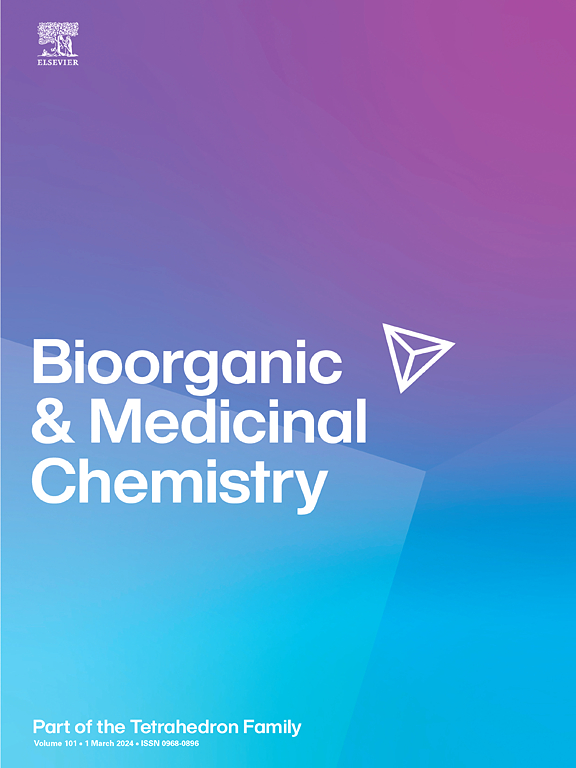Scaffold hopping and sidechain modification from a flavone scaffold lead to discovery of potent, selective CK2A2 inhibitors with favorable properties for CNS activity
IF 3
3区 医学
Q2 BIOCHEMISTRY & MOLECULAR BIOLOGY
引用次数: 0
Abstract
The human protein kinase CK2 has long been of interest as a target in oncology, but new evidence is emerging of its role in central nervous system (CNS) disorders. The CK2 catalytic subunit paralog CK2A2 is enriched in the CNS relative to other tissues; however, the catalytic subunit paralog CK2A1 is expressed at similar levels across most tissues. Current treatment modalities centered on CK2 inhibition under clinical study lack evidence of CNS activity, kinome-wide selectivity, or CK2A2 paralog selectivity. Therefore, a brain-penetrant inhibitor selective for CK2A2 over CK2A1 may enable the further elucidation of the role of this paralog in CNS pathologies. In this work, we describe a series of flavone-inspired inhibitors of CK2A1 and CK2A2 designed and synthesized in a structure-based drug-design campaign. Multiple candidates demonstrating promising CK2A2 potency, kinome-wide selectivity, and CNS permeability/activity were identified, with compound 65 representing the best confluence of these properties. Although these lead candidates exhibited only up to three-fold preferential inhibition of CK2A2, they represent a starting point for the study of CK2A2 and the disorders it may mediate in the CNS.

黄酮支架跳跃和侧链修饰导致发现有效的,选择性的CK2A2抑制剂,具有良好的CNS活性
人类蛋白激酶CK2作为肿瘤靶点一直备受关注,但其在中枢神经系统(CNS)疾病中的作用的新证据正在出现。相对于其他组织,CK2催化亚基平行物CK2A2在中枢神经系统中富集;然而,催化亚基平行物CK2A1在大多数组织中表达水平相似。在临床研究中,目前的治疗方式集中在CK2抑制上,缺乏CNS活性、激酶全选择性或CK2A2平行选择性的证据。因此,一种选择性CK2A2而非CK2A1的脑渗透抑制剂可能会进一步阐明这种平行通路在中枢神经系统病理中的作用。在这项工作中,我们描述了一系列黄酮激发的CK2A1和CK2A2抑制剂在基于结构的药物设计活动中设计和合成。多个候选物显示出有希望的CK2A2效力、激酶全选择性和CNS通透性/活性,化合物65代表了这些特性的最佳融合。尽管这些主要候选药物对CK2A2的优先抑制作用仅为三倍,但它们代表了CK2A2及其可能介导的中枢神经系统疾病研究的起点。
本文章由计算机程序翻译,如有差异,请以英文原文为准。
求助全文
约1分钟内获得全文
求助全文
来源期刊

Bioorganic & Medicinal Chemistry
医学-生化与分子生物学
CiteScore
6.80
自引率
2.90%
发文量
413
审稿时长
17 days
期刊介绍:
Bioorganic & Medicinal Chemistry provides an international forum for the publication of full original research papers and critical reviews on molecular interactions in key biological targets such as receptors, channels, enzymes, nucleotides, lipids and saccharides.
The aim of the journal is to promote a better understanding at the molecular level of life processes, and living organisms, as well as the interaction of these with chemical agents. A special feature will be that colour illustrations will be reproduced at no charge to the author, provided that the Editor agrees that colour is essential to the information content of the illustration in question.
 求助内容:
求助内容: 应助结果提醒方式:
应助结果提醒方式:


